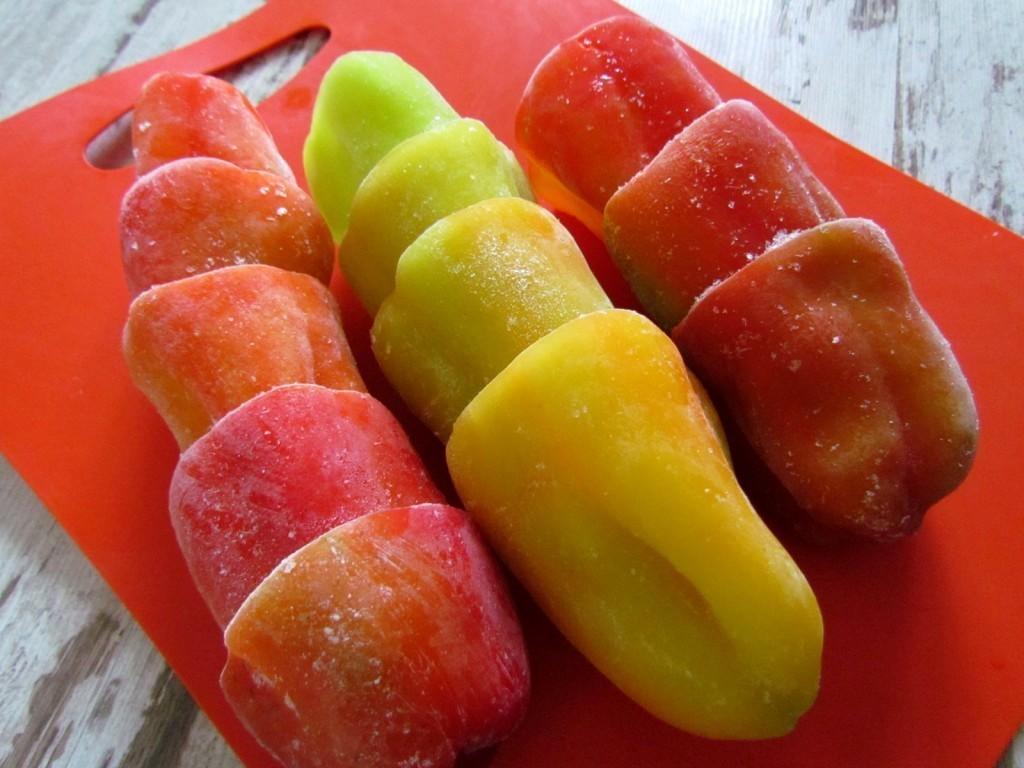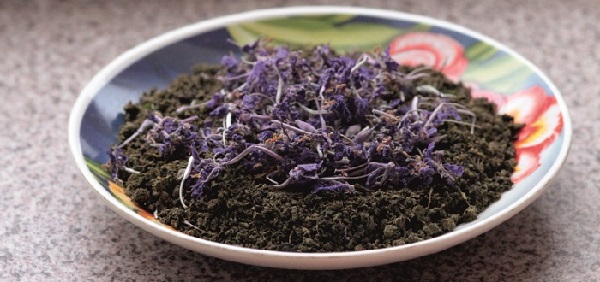Traditional Ossetian pies. History and origin of Ossetian pies
Origin history
Ossetian pie is a flat baked tortilla with a filling. They appeared long before our era. In ancient mythology, Ossetian pies are mentioned in many stories. For example, “Ossetian epic and mythology” or “Nart Tales”. Ossetians believe that pizza is just an unfortunate Italian plagiarism for Ossetian cake, and the famous Russian yeast chicken coops and fishmen - that this is an attempt to surpass Ossetians.
In Soviet times, Vladikavkaz began to produce Ossetian pies of its own production. The recipe was kept strictly secret from competitors and consumers. In Moscow, pies were very popular, they were ordered in batches and delivered by plane.
At one time, there were problems with the quality of the pies due to the long delivery, but this problem was solved with the help of fat milk. Pies on whole homemade milk turned out to be much tastier, stored longer and smelled incredibly delicious.
Today, Ossetian pies in the coastal region can be ordered even with home delivery, while the choice of filling is so great that it will satisfy the tastes of even the most sophisticated gourmets.
Traditions and cooking rules
In Ossetia, it was believed that if a girl knows how to cook pies correctly, then she will surely marry successfully, and if not, then, accordingly, she had to study and wait. Successful pies were considered those who had thin soft dough.
In the Caucasus, it is customary to serve at least three pies on a plate on a holiday - in honor of the Father, the Son, and the Holy Spirit. Ossetians believed that their pies associate Water, Earth, the Sun. Two pies are placed on the mourning table, because the sun no longer shines for the deceased.
Before you cut the pie, you must read the prayer. Then the oldest man at the table cuts it into eight parts and distributes it to everyone.
There are church holidays, according to which it is customary to cook triangular pies and only with cheese. It is believed that when cooking a pie a woman puts soul and good into it. You can not start kneading the test with bad thoughts and mood. Inexplicably, it has already been proven that pies baked in a good mood have a positive effect on the human inner world.
Varieties of Ossetian pies
1. Davonjin - got its name due to the content of cherry in the pie.
2. Cabuskadzhin - cabbage pie and cheese.
3. Kartofjin - a pie with the main ingredient of potatoes.
4. Nasjin - a pie with pumpkin.
5. Khabizdzhin - a triangular pie with Ossetian cheese.
6. Artadzikhon - a round cheese pie.
7. Fydzhin - with small pieces of meat.
8. Kudurzhin - bean pie
9. Tsakharajin - with beet tops and feta cheese.
10. Kadinjin - a pie with onions and cheese.
11. Zokojin - with mushrooms
12. Balgin is a sweet cake with cherries or cherries.
Cooking features
In order to make pies thin, soft and tasty, you need to responsibly approach the choice of products. Yeast should be fresh, then the cake will turn out lush and rise well. Fatty homemade milk should be taken as the basis of the test - it will give the test a pleasant aroma and milky taste. Eggs must be fresh, and therefore it is better to buy them from farmers in the market. Sift the flour two or three times to remove excess impurities and saturate with oxygen.
Views: 3832/1169
National pies with various fillings are the pride of the hospitable and friendly Ossetia. Traditional cooking methods have been known for over a thousand years. Such dishes are certainly prepared for the festive table: for a wedding, birthday, housewarming. Also, they are often often baked just like that, as a hearty and tasty lunch or dinner.
According to tradition, an odd number of pies are always placed on the table. The only exception is the memorial meal. Baking for social events has a round shape, and for religious holidays - triangular.
The name of the pies in most cases is determined by the composition of the filling. For example, “Khabizdzhyn”, “Ualibah”, “Chiri” are pastries with cheese. If potato is included in the stuffing, then such a dish will be called “Kartofdzhyn”. The dish with beetroot leaves and cheese is Tsakharajyn. And Fydzhyn is a pie with beef.
It should be noted that in some areas of Ossetia the composition of the filling and the above names may vary.
The process of making pies is quite simple, without complicated techniques. However, some experience with the yeast test is still required. As a rule, only women are engaged in cooking; for the stronger sex, work in the kitchen is considered humiliating. An indicator of good baking quality is the thinnest layer of dough and generous filling.
Do I need to modernize Ossetian cuisine?
It is believed that expanding the range of fillings will increase the number of fans of pies. However, you should take into account the risk of loss of uniqueness and originality of foods.
In the preparation of traditional pies, those ingredients that are found in the Caucasus are used - meat, beans, cabbage, beetroot leaves, cheese, etc. Of course, in the pursuit of profit, you can bake flat cakes with almost any filling, for example, with fish. But can such dishes be called Ossetian?
It so happened that in the small town of Revalsar, relatively secluded in the Himalayas, we arrived quite late, so late that it was difficult for small, sleepy and lazy provincial hotels to bother with our check-in. The hotel owners shrugged, shook their heads, and waving their hands somewhere in the direction of the night, slammed the doors in front of our nose. But we were willingly, though not admitted to live in a guest house on the territory of a Tibetan Buddhist monastery on the lake.
As is often the case for Tibetan places, an Indian was engaged in our meeting and accommodation, since it is not worthwhile for Tibetan monks to deal with monetary and worldly issues. In addition, the monastery was not plunged into the night darkness for many hours, and the monks should have slept so that early tomorrow morning they should go for meditation with a vigorous and pious face. About this and other sorrows of the world, the Indian told us the keys to the hotel room, and in order to at least somehow console himself, he insistently recommended that we attend this event at seven in the morning.
The main topics below: buses and trains, airline tickets and visas, health and hygiene, safety, route selection, hotels, food, and the necessary budget. The relevance of this text is the spring of 2017.
Hotels
“Where will I live there?”, For some reason this question is very strong, just terribly annoying to those who have not traveled to India yet. There is no such problem. The hotels there are a dime a dozen. The main thing to choose. The following is a discussion of inexpensive, budget hotels.
In my experience there are three main ways to find a hotel.
Spiral
Usually you will arrive in a new city by bus or train. So around them there is almost always a great mass of hotels. Therefore, it is enough to move a little away from the place of arrival and start walking in a circle with an ever-increasing radius in order to come across many hotels. Lettering "Hotel" in a large part of India, it denotes a place where you can eat, so the main landmarks are signs "Guest house" and "Lounge".
In areas of mass idleness (Goa, the resorts of Kerala, the Himalayas), the private sector is developed, well, as we have on the Black Sea coast. There you can take an interest in housing with the local population and focus on the signs " Rent". In Buddhist places you can live in monasteries, in Hindu in ashrams.
The farther you move away from the bus station or railway station, the lower the price, but hotels are less and less common. So look around a few hotels acceptable in price and quality and return to the selected one.
If you are traveling in a group, you can send one or two people light in search of a hotel, while the rest are waiting at the station with things.
If the hotel is refused and they say that the hotel is only for Indians, then insisting on checking in is practically useless.
Ask a taxi driver
For those who have a lot of luggage or just look for laziness. Or you want to settle near a tourist attraction, for example, at the Taj Mahal, and not at the station. There are places of traditional tourist congestion in major cities: in Delhi this is the Main Bazaar, in Calcutta it is Sader Street, in Bombay it is also somehow called, but I forgot, that is, you have to go there anyway.
In this case, find the driver of a rickshaw or taxi and set the task where you want to live, in what conditions and for about money. In this case, you can sometimes be taken free of charge to the desired hotel, even show several places to choose from. It is clear that the price immediately rises, it makes no sense to bargain, since the taxi driver's commission is already included in the price. But sometimes, when laziness or in the middle of the night, using this method is very convenient.
Book online
This is for those who love certainty and guarantees, more comfort and less adventure.
Well, if you book in advance, then book hotels of higher quality and not too cheap (at least $ 30-40 per room), because otherwise there is no guarantee that in reality everything will be as beautiful as in the photographs. I also complained that sometimes they came to the reserved hotel, and the rooms, despite the reservation, were already occupied. The owners of the hotel were not embarrassed, they said that a client came with money, and the client with cash did not have enough willpower to refuse. They returned the money, of course, but it’s still insulting.
Searching, checking in and staying in inexpensive Indian hotels in itself can be an independent adventure, a source of funny, and sometimes not very funny memories. But then there will be something to tell later at home.
Settlement technology
- Free yourself from the presence of "Hindu helpers" and beckon, their presence automatically increases the cost of settlement.
- Come to the hotel, which seems worthy of you and ask how much it costs and decide whether to live there, at the same time you have time to evaluate the interior and helpfulness.
- Be sure to ask to show the number before checking in, show with all your appearance dissatisfaction and indignation, ask to show another number, most likely it will be better. This can be done several times, achieving all the best accommodation conditions.
Those who are interested in the energy of Osho and Buddha, meditation and India, we invite all of you on a journey to the places where you were born, lived the first years of your life, and the greatest mystic of the 20th century Osho gained enlightenment! In one trip, we combine the exotic of India, meditation, absorb the energy of Osho places!
The tour plan also includes a visit to Varanasi, Bodhgai and possibly Kajuraho (upon availability of tickets)
Key Travel Places
Kuchvada
A small village in central India, where Osho was born and lived for the first seven years, surrounded by the care and care of his loving grandparents. In Kuchvad, there is still a house that has remained exactly what it was during the life of Osho. Also near the house there is a pond, on the shore of which Osho liked to sit for hours and watch the endless reed movement in the wind, funny games and herons flying over the surface of the water. You can visit Osho’s house, spend time on the shore of a pond, walk around the village, soak up that serene spirit of rural India, which undoubtedly had an initial influence on the formation of Osho.
In Kuchvada there is a rather large and comfortable ashram under the patronage of sannyasins from Japan, where we will live and meditate.
A small video “emotional impression” of visiting Kuchwada and Osho’s home.
Gadarwara
At the age of 7, Osho, along with his grandmother, moves to his parents in the small town of Gadarvara, where his school years pass. By the way, the school class where Osho studied still exists, and there is even a school desk where Osho was sitting. You can go into this class, sit at a school desk, where our beloved master spent so much time in his childhood. Unfortunately, getting into this class is a matter of chance and luck, depending on which teacher conducts classes in the classroom. But in any case, you can walk along the streets of Gadarvara, visit elementary and secondary schools, the house where Osho lived, the beloved Osho River ...
And most importantly, on the outskirts of the city there is a quiet, small and cozy ashram, where there is a place in which at the age of 14 Osho experienced a deep experience of death.
Video from the Osho Ashram in Gadarwar
Jabalpur
A large city with more than a million inhabitants. In Jabalpur, Osho studied at the university, then worked as a teacher in it and became a professor, but the main thing is that at the age of 21 he gained the enlightenment that happened to him in one of the parks of Jabalpur, and the tree under which it happened still grows on old place.In Jabalpur we will live in a quiet and comfortable ashram with a magnificent park.


From the ashram it is easy to get to the Marble Rocks - a miracle of nature, where Osho liked to spend time during his stay in Jabalpur.
Varanasi
Varanasi is famous for its cremation bonfires, which burn both day and night. But there is also a surprisingly pleasant promenade, the famous Kashi Vishwanath temple, boat trips along the Ganges. Near Varanasi there is a small village Sarnath, famous for the fact that Buddha read his first sermon there, and the first listeners were ordinary deer.



Bodhgaya
The place of enlightenment of the Buddha. In the main temple of the city, which is surrounded by a beautiful and vast park, a tree still grows in the shade of which Buddha gained enlightenment.
In addition, in Bodhgaya there are many of the most diverse Buddhist temples erected by followers of Buddha from many countries: China, Japan, Tibet, Vietnam, Thailand, Burma ... Each temple has its own unique architecture, decoration, and ceremonies.



Kajuraho
Kajuraho itself is not directly connected with Osho, except for the fact that Osho often mentioned Ojo about tantric temples, and his grandmother was directly related to Kajuraho.

Ossetian cuisine has long been famous for its fragrant pastries. Ossetian pies soaked with the smell of herbs have been enjoyed by many gourmets. But perhaps the most unique of them is Fydjyn meat pie without yeast, eaten by forks. There are several ways to prepare this traditional Caucasian baking.
Many believe that this particular recipe is the most ancient and real. Maybe this is so, now we will not argue about this. But the fact that with the correct preparation of meat pie its taste is remembered forever is an indisputable fact.
Fydzhyn is considered a festive dish in the Caucasus and always occupies a place of honor in the western part of the table - where the most respected guests and elders of the family sit.
It has a unique property: the meat filling along with the broth is preserved inside the pie. Just so, lifting the upper “cover” of the pie, we see spicy small pieces of meat that are enveloped in a fragrant broth. But let's not get ahead of ourselves, let's start in order.
Features of the preparation of the pie
Let me repeat: for yejin pie, yeast-free dough is used - that is, it contains flour, salt, soda, water and vinegar.
- About 400 g of flour should be taken, although more may be needed: it absorbs water differently
- We warm the water (about a glass) a little
- Still need half a teaspoon of soda and a little 9 percent vinegar to pay it off
- Salt - also half a spoon - add for taste
Sift the flour, make a depression in it, pour in water, then put salt and quenched soda boiling in a spoon. All the ingredients are in place, we begin to knead. First - in a bowl with a fork, then - on a table slightly dusted with flour.
To make the dough stick less to your hands, you can grease them with vegetable oil. In the end, you should get a soft, elastic dough that will be suitable for about half an hour: so much time is needed for the gluten of the flour to swell and all the ingredients "get along" with each other.
And here the features of this cake begin. The main rule of Ossetian pies is a thin layer of dough and a lot of toppings. In our fijin, the bottom layer will be a little thicker than in other cakes in this kitchen. We will do this on purpose — so that the broth with meat does not “run away” from the cake ahead of time:
- We distribute a thicker layer in the pan, its edges should protrude beyond it
- On top we evenly spread the pre-cooked filling, consisting of beef, onions, garlic, spices, salt
- The upper layer is formed thinner, according to tradition
- We make small cuts in it. Steam will come out through them: the laws of physics must be respected and the tear of the test must be prevented, which is inevitable if the filling is “sealed” tightly
- We cover our baking with this “cap” and send it to the oven.
And now - an exciting moment: our Fydzhin - in Ossetian - is ready. We take it out of the oven, traditionally generously grease with butter - and you can start a feast for the whole world. Cut the upper thin layer of the pie along with the meat filling into small pieces. We prick them on a fork, dip them in the broth left at the bottom of the pie, and enjoy the incredible taste and aroma.
Ossetian pies have been accompanying people for more than a thousand years. This is a cult dish of the Ossetian people, which is eaten on weekdays and on holidays. Their preparation and use has its own strict rules.
Ossetian pies can be round or triangular. If the former eat both on weekdays and on holidays, the triangular ones are baked only for special rituals. Usually they are served at a funeral service. In this case, an even number is laid out on a plate.
The traditional round Ossetian pie symbolizes the sacred circle of life. This is a cult dish. Therefore, in its preparation follow certain rules. Pies should be baked only by women according to a strictly observed recipe. Its size should not exceed 35 cm in diameter. It is very important to roll out the dough correctly. It should not be fat. There is always a lot of juicy toppings in such a pie; there should be little dough.
Surprisingly, with strict adherence to the recipes, every housewife always gets a little different pies. This is due to the fact that each craftswoman seeks to find her secret ingredient in the preparation of this ancient dish. As a result, a unique situation arises of the diversity of tastes while preserving a seemingly small number of options for their preparation.

Such pies are not only baked according to the rules that have been carefully passed down from generation to generation for centuries. There are also such pies in a special way. They can not be eaten on the go. This is a sacred dish requiring a respectful attitude.
The hostess puts three pies on the table. And before making the first feast toast, which serves as a prayer, they must be moved apart in different directions so that it is clear that there are three pies on the table.
What fillings are put in Ossetian pies
Under the fragrant thin crust of dough the most varied filling can be hidden: meat, potatoes, apples, pumpkin, beans are placed in such products. But the most famous filling is cheese. Therefore, the Ossetian pie with cheese Ulibakh is the most popular and famous. Not a single Ossetian feast can do without it. On weekdays and holidays, Ossetians should always have three cheese pies on the table: they symbolize gratitude to God and are a symbol of prosperity and prosperity.
If you have never tried the famous Ossetian pies, you can order them at the Golden Ear bakery. We bake pies with the most varied filling according to ancient recipes. We follow all cooking rules. We have real craftswomen who bake incredibly delicious pies.
Here you can find real culinary masterpieces with various fillings, and, of course, the famous Ossetian cheese pie.

In our price list there are Ossetian pies prepared according to old national recipes:
- Fijinn (with meat)
- Walibach (with cheese)
- Kartofjin (with potatoes)
- Dzaharajin (with beetroot leaves and cheese)
- Kabushka gin (with cabbage)
- Nasjin (with pumpkin)
- Kadurgin (with beans)
- Phytkyuyjin (with apples)
You can also order a pie with any filling. Simply fill out the application on our website and we will bring you a warm and fragrant Ossetian pie at the indicated address!



















